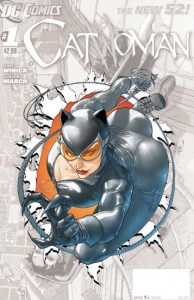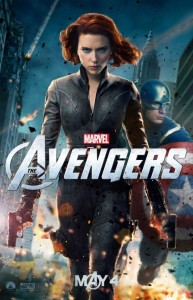 Are web series the way of the future? For most of you I’m sure your answer is, “what the hell are you talking about”?
Are web series the way of the future? For most of you I’m sure your answer is, “what the hell are you talking about”?
Since about 2006 I have been fascinated by the how media and the way we consume it is evolving. That was the year I really got into podcasts. One of the early ones I found was Adam Curry’s Daily Source Code. During those early days one of Adam’s assertions was that in five years 50% of the media we consume would be produced by what were previously consumers.
It’s six years later and while we are not at the 50% mark we are further along than we were. And I think there are three factors at play here.
The first is how we want to consume media. I for one do not watch anything on TV during the time it is actually broadcast. Between my work schedule and other activities I just don’t have the time. If I am interested in something I either watch it on demand, or online. When I reviewed American Horror Story, I did not watch a single episode during broadcast; I went out to FX’s website and watched. If I am not watching a show through On-demand, I am either watching it on Hulu, Netflix, or in rare cases Itunes.
And this is a growing trend. We have the technology to watch what we want, when we want, and where we want. The big media companies are catching on slowly. I am convinced that there will come a day when watching on demand is the norm and that shows will not be scheduled around a timeslot at all.
And this brings us to the other factor at play, the technology. Back in the eighties I was part of an amateur film making group. We made Star Trek, Doctor Who, and Mystery Science Theater 3000 fan films. Back then our distribution network was basically word of mouth at conventions and tape distribution. Also we had to rent time with editing equipment. Now you can get editing software for reasonable rates and when you are done you upload the video on-line.
So the barrier of getting your material out is gone. Instead the effort is to get people’s attention with so much competition.
So back to my original statement, why are web series the way of the future.
First I want to point out that there are basically three different types of web series.
The first is the professional series, produced by a big studio or network. These are either online side series to bigger shows, or original products that are not big enough to put on a network. Examples would be online extensions to the shows Heroes and Battlestar Galactica, or original content like the Booth at the End and The Legion of Extraordinary Dancers (LXD). The extension series can add detail to the main show, but they are general made so that they are not required viewing. A show like Booth at the End is a smaller budget scenario but can give actors who rarely get a chance at starring roles the opportunity to show their chops. LXD, which I previously reviewed, is an example of a show that would just not fly on regular TV, but given a chance online, is able to find an audience. The non-extension examples can often blurs the line with the next type
The second type of web series is the independently professional produced series. Shows like Doctor Horrible’s Sing-along Blog, The Guild, or Leap Year, which again have recognizable actors and even creators, but are made outside of the normal studio system. These can be passion projects for a creator that they cannot get backed, or an attempt for an up and comer to show they have the skills to work in the industry.
The previous two types of web series are ones that while smaller than normal TV shows can still get enough press to be successful. The third type is also the one that most fits Adam Curry’s prediction. These are independently produced shows that feature an amateur cast. The budgets are often small, so for a show to succeed there are to be something going for it like good writing and solid concepts. A great example is a show I previously reviewed called Ninja: The Mission Force. The production company, Dark Maze Studios, specializes in what it calls micro budget productions. Other great examples are Standard Action, Transylvania Television, lonelygirl15 and JourneyQuest.
A subset of type three is the internet reviewer. I’ve mentioned some of these before. The best examples can be found at That Guy with the Glasses. Some of the reviewers are also film makers so it all comes down to people looking for a way to be creative.
Of course some people do it because they want to be famous, but honestly that’s not the worst motivation. But unless they have talent to go along with ego they aren’t going to do so well.
It’s the independent amateurs that I feel personally drawn to. These are the people that in the pre-internet days no one would have ever heard of. Now they have a means to get their work to an audience and make a name for themselves.
And actually make money at it.
That is the third factor at play. People have finally figured out how to monetize web series. It can take a few forms.
The most common is ad revenue, just like regular TV. In the case of online video it is usually by going through a service, like Blip TV, that hosts the video and stiches ads in them. The service will then split the ad revenue 50/50 with the video producer. The revenue is based directly on how many views a video gets so the more popular producers can make a full time job of it.
For the professionally produced web series they will either be on a studio site, or on a site like Hulu.
A variation of the above is when a site picks up a video producer, like IGN or the Escapist. They take care of the ads and pay the producer.
Another way is crowd sourcing, where the producer gets donations from fans to produce the show. This is how the first season of the Guild was paid for. The advent of Kickstarter has been a great boon to the web series, as it has for many artistic endeavors.
Since there is money to be made people will go out and make web series. This is what will make sure that there will be more and more content. So I say give it another five years and Curry’s prediction will come true.
I could go on about individual shows, and I certainly will in future articles. In fact in a couple of weeks I will be reviewing Booth at the End.
Who knows, if the stars are right maybe one day I might finally get around to creating a web series of my own. It could happen.












